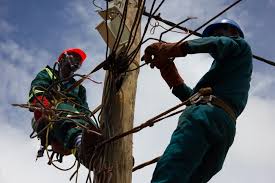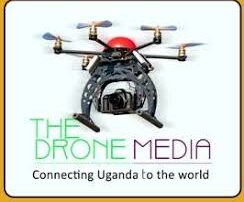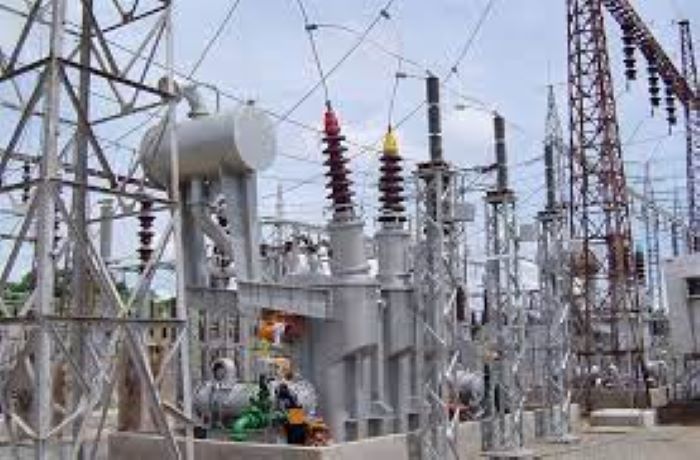World Bank report on electricity in Uganda

Generation
The Uganda Electricity Generation Company Limited (UEGCL) owns power generation assets currently operated under a 20-year lease agreement by Eskom Uganda Limited (namely Nalubaale and Kiira hydropower stations – the output from which amounted to 37.6% of the electricity generated in Uganda between 2017 quarter 4 and 2018 quarter 3). The remaining generation comes from independent power producers (IPPs – 61.6% in the period from 2017 Q4 to 2018 Q3) and imports (0.8%). The largest of the IPPs is Bujagali Energy Limited (41% of the total net generation in the 2017 Q4 to 2018 Q3 period), alongside 19 significantly smaller private generation plants, including some renewable projects partially funded through the GetFiT and ReFiT programmes.
More recently, a number of large hydropower projects have been approved for licensing and commissioning, including Karuma (600 MW – expected to be commissioned in 2020) and Isimba (183 MW – commissioned in 2019).
Transmission:
The Uganda Electricity Transmission Company Limited (UETCL) is the single-buyer. It owns and operates transmission assets and is the electricity wholesaler to Umeme Limited and small Service Providers connected (via the distribution system operated by Umeme Limited) to the transmission network. UETCL is also the only utility licenced to import and export power from and to other countries in the region.
Uganda is currently trading power with Kenya, Tanzania, Rwanda and DRC. In 2014, power exports added up to approximately 40 MW of net power exports at system peak times. In the 2017 Q4 to 2018 Q3, 6.4% of energy sales by UETCL have been exported.
Distribution by Umeme Limited’s concession:
The Uganda Electricity Distribution Company Limited (UEDCL) owns distribution assets currently operated by Umeme Limited under a lease agreement started in 2005.
Umeme Limited is the major electricity distributor in Uganda, which operates a 20-year electricity distribution concession effective from 1st March 2005, from the government of Uganda. Between 2017 quarter 4 and 2018 quarter 3, Umeme Limited distributed nearly 92% of the total energy transmitted on the transmission network, 98% of the electricity transited on distribution networks, and supplied 93% of electricity customers in Uganda. Umeme Limited was until recently owned by Actis, who sold their remaining shares in Umeme Limited in December 2016 and has now completely withdrawn from its management.
Umeme Limited’s supply and distribution licences provide for an exclusive right to supply electricity in an area up to one-kilometre radial distance from the existing distribution lines, with other organisations being free to compete to supply electricity beyond this area, and an obligation to provide service within the area of exclusivity.
Other Service Providers connected to the main grid Six:
Other Service Providers (called small Service Providers) operate smaller distribution networks connected to the transmission system through UEDCL/Umeme Limited’s distribution grid. The assets they operate have been funded and commissioned through REA – including by the use of the Rural Electrification Fund – which currently also retains the ownership of those assets, although it is expected that ownership will ultimately be transferred to UEDCL. Each small Service Provider operates under a lease (sometimes called a concession) agreement with REA and REB.
Key features of concession agreements for Service Providers established in Uganda since 2007, based on the most recent information made available in the context of the World Bank Report.
Key features of contractual arrangements for other Service Providers include, name of Service Provider, commercial operation date and expiry date of current agreement and these include:
Bundigugyo Co-Operative Society (BECS) 2011 2021, Kilembe Investments Limited (KIL) 2007 unknown*, Ferdsult Engineering Services Limited (FESL) 2007 has ceased operations**, Pader-Abim Community Multipurpose Electric Cooperative Society Limited (PACMECS) 2011 2021 , Kyegegwa Rural Electrification Company Limited (KRECS) 2014 -2024.
*The license agreement which we have been provided for review expired in 2017. **The ERA together with REA, nominated UEDCL to take over the management of these service territories previously operated by FESL on March 2017 following a number of failures in FESL’s performance.
In addition, UEDCL has been operating in areas of the distribution network since its establishment in 2001.
There is a discovery in the breakdown of bulk power sales by UETCL to the “transmission connected” distribution Service Providers (i.e. Umeme Limited and small Service Providers) in 2017 Q4 – 2018 Q3. It does not show Hydromax as this Service Provider is currently not buying any power from UETCL.
Breakdown of UETCL sales in 2017 Q4 – 2018 Q311
Name Sales from UETCL (GWh) % of total sales
Umeme Limited 3,532.8 91.6%
Bundibugyo Co-Operative Society 3.0 0.1%
Pader-Abim Community Multipurpose Electric Cooperative Society Limited
2.3 0.1%
Kilembe Investments Limited 5.9 0.2%
11 Source: ERA statistics
Ricardo Energy & Environment
Ricardo in Confidence Ref: Ricardo/ED11701/Issue Number 1
Name Sales from UETCL (GWh) % of total sales
Kyegegwa Rural Electrification Company Limited
4.0 0.1%
UEDCL 64.2 1.7%
Exports 245.2 6.4%
Total 3,857.4 100%
Service Providers not connected to the main grid .
Finally, three Service Providers (sometimes called “off-grid”) distribute electricity in areas which are not currently connected to the main transmission network. They include the West Nile Rural Electrification Company (WENRECo), Kalangala Infrastructure Services Limited and Kisiizi Hospital Limited. Kisiizi Hospital Limited has recently applied to request a connection to the main grid. This application is being reviewed by the Electricity Regulatory Authority.
Summary shows the customer sales for 2018 Q3, for Umeme Limited and each small and off-grid Service Provider, to highlight the size of each of these entities relatively one to another.
Breakdown of customer sales in 2018 Q3
Name
Customer sales (GWh)
% of Total sales
ON-GRID
Umeme Limited 772.69 97.61%
UEDCL 11.39 1.44%
Bundibugyo Co-Operative Society 0.51 0.06%
Pader-Abim Community Multipurpose Electric Cooperative Society Limited
0.61 0.08%
Kilembe Investments Limited 1.3 0.16%
Kyegegwa Rural Electrification Company Limited 0.87 0.11%
Kabalega Hydromax12 0.04 0.01%
Total Small Service Providers 14.73 1.86%
Total On-grid 787.41 99.47%
OFF-GRID
According to this report, value of 2017 Q4 used due to data not reported for 2018 Q3
Ricardo Energy & Environment
Ricardo in Confidence Ref: Ricardo/ED11701/Issue Number 1
Name
Customer sales (GWh)
% of Total sales
West Nile Rural Electrification Company13 3.79 0.48%
Kalangala Infrastructure Services (KIS)14 0.23 0.03%
Kisiizi Hospital15 0.18 0.02%
Total Off-grid 4.2 0.53%
ALL
Total Small Service Providers+ Off-grid 18.93 2.39%
Total 791.61 100.00%
In light of the analysis completed in this section, it is clear that the organisation of the distribution sector is too complex and has a number of inefficient aspects in that very small Service Providers operate alongside Umeme Limited. Subsequent analysis in the report will demonstrate that they cannot leverage the same efficiencies and economies of scale as Umeme. As further investigated in the report, the resulting financial difficulties experienced by the smaller Service Providers are such that they cannot operate fully functionally and deliver on their access expansion objectives – the example of FESL having to cease operations shows further evidence of this.
The importance of electricity access:
Although various sources adopt different definitions for electricity access and make different interpretations of the current situation, there is a general consensus that the vast majority of households in Uganda do not have access to a reasonable quality of electricity supply, which is even more pronounced in rural areas. The provision of electricity access has the capacity to support the progression of developmental benefits, as well as addressing some of the disparities that prevail between men and women. In Uganda, the majority of women, particularly in rural areas, are still responsible for the traditional tasks of collecting water, food and fuel. The provision of appliances powered by electricity will increase the efficiency of traditional tasks, as well as providing the potential to bypass these tasks altogether. This opens up the opportunity for women to spend more time on additional income-earning activities. Dinkelman (2011) found that women’s employment in South Africa increased by 13.5% following electrification, compared to 4% for men16.
Home energy access also enables women (and men) to charge mobile phones with ease, enabling knowledge-sharing and supporting business development.
Organisations, such as Eco-Fuel Africa, are supporting women to set up their own businesses, through offering a credit scheme to enable women to purchase and sell green charcoal, through mobile phone-based payments18. Electricity also brings internet access, enabling girls to study beyond the confines of school hours. Currently, under 10% of individuals in Uganda know what the internet is, and less than 5% of people use it.
Therefore, value of 2017 Q4 used due to data not reported for 2018 Q3 14 Value of 2017 Q3 used due to data not reported for 2018 Q3
Value of 2017 Q4 used due to data not reported for 2018 Q3 16 The Effects of Rural Electrification on Employment: New Evidence from South Africa, Dinkelman, T (2011). 17 Ibid. 18 Energy access and gender getting the right balance, Dutta, S; Kooijman, A and Cecelski, E (2017). 19 Gender assessment of ICT access and usage in Africa, Gillwald, A; Milek, A and Stork, C (2010).
Ricardo Energy & Environment
Ricardo in Confidence Ref: Ricardo/ED11701/Issue Number 1
there is great scope to enhance awareness of its potential and to improve access to information and educational resources, through its provision.
Currently, over 30% of the population depend on kerosene and oil lamps for light. Switching to electric light will lower the risk of burns and reduce indoor air pollution21. Studies have highlighted the connection between indoor air pollution and the prevalence of acute respiratory infections (ARIs) in children. In Uganda, over 33% of time which should have been spent at school is missed due to lack of electricity. Therefore, there is great scope to enhance school attendance rates, through the provision of electricity. In health clinics, electricity access and the refrigeration of vaccinations bring positive health outcomes. Until recently, Bugala Island in Lake Victoria lacked access to reliable sources of energy. Kalangala Infrastructure Services was established to address the unique energy needs of Bugala Island and has since provided access to electricity in the island’s hospital centre, enabling the use of machines for anaesthesia and the delivery of oxygen, which could not be utilised before23. This has increased comfort for patients, as well as enabling procedures to occur that were not previously possible.
Through reducing the time currently spent on traditional tasks, enhancing feelings of safety at night, reducing indoor air pollution and improving the capabilities of health clinics, there is great potential for access to electricity and appliances to empower women (and men) in Uganda. However, it is also important that electricity access projects remain mindful of complementary measures, which will support women’s use of electricity, such as the provision of access to credit and the extension of women’s rights and empowerment24.
A more detailed review of the socio-economic and gender empowerment benefits provided by electricity access is presented in Appendix 2: The importance of electricity access – a detailed review.
Review of the Legal and Regulatory Framework
Structure of the Legal and Regulatory Framework: The core of the legal framework for implementing government policies is the Electricity Act (1999), which, among other things, determines fundamental aspects of the economic regulatory framework such as ERA’s role and missions, licensing conditions and requirements, and general principles for the determination and implementation of tariffs for end-user electricity customers. This is supported by secondary legislation – regulations and orders – which focus on various aspects of the framework.
Content of the Legal and Regulatory Framework
The Electricity Act: The Electricity Act of 1999 (“the Act”) established ERA as a statutory body, which is responsible for the regulation of generation, transmission, distribution, sale, export and import of electricity in Uganda. In 2001, the Government unbundled the Uganda Electricity Board which had been vertically integrated since 1948. In order to manage the implementation of rural electrification, a Rural Electrification Board was created in 2001. The Rural Electrification Agency (REA) acts as the secretariat of this board.
The Act outlines the functions of ERA which has a very broad role that encompasses the current operations and future development of the sector. These functions are provided in Section 10 of the Act. They include but are not limited to: licensing, tariff setting, investment approval and verification, industry
National Household Survey undertaken by UBOS in 2017 21 The Effects of Rural Electrification on Employment: New Evidence from South Africa, Dinkelman, T (2011). 22 Access to energy & human development, Gaye, A (2007). 23 Reliable power is transforming healthcare in Uganda. Private Infrastructure Development Group (2019). 24 Enabling Equitable Access to Rural Electrification: Current Thinking on Energy, Poverty, and Gender, Cecelski, E (2003). 25 Source: Strategic Plan 2014/15 – 2023/24, Electricity Regulatory Authority.
Ricardo Energy & Environment
Ricardo in Confidence Ref: Ricardo/ED11701/Issue Number 1
standards setting, reporting on sector performance, and supporting governing bodies in the review of the organisation of the sector, and in sector planning activities.
In addition, Section 11 of the Act highlights some general and more specific objectives for ERA to respond to. Section 11.1 requires that the authority should in performing its functions and exercising its powers be: • Open and objective; • Fair and reasonable; • Non-discriminatory; and • Promote fair competition.
Sections 16 and 17 of the Act establish the independence of ERA together with the ability of the Minister responsible for electricity to give directions to it as long as these do “not adversely affect or interfere with the performance of the functions and exercise of powers of the authority” under the Act.
Finally, Section 75 of the Act makes provisions for a number of activities related to tariff setting, including but not limited to: • Tariff structures; • Tariff applications; • Tariff setting methodologies; and • Royalties payable to local governments.
Proposed amendments to the Electricity Act: According to a report produced by AF-Mercados EMI for the Ministry of Energy and Mineral Development called “Consultancy Services for Review of the Power Sector Reforms in Uganda” (February 2017) the GoU Cabinet had in 2015 approved the principles for amendments to Electricity Act and authorized MEMD to issue parliamentary drafting instructions.
It is understood that a number of challenges had previously been identified ranging from issues relating to institutional responsibilities and efficiency, land matters, enforcement of compliance, offences, penalties and sanctions. Although the Mercados report stated that a draft Bill containing amendments to the Act had been proposed it has not been possible to obtain a copy of it or to identify progress made in enacting the proposed changes. Apparently, the main amendments were as follows: • Electricity Regulatory Authority (ERA)
o Staggered terms of office for the members of the authority (three members would hold office for five years and two members for four years) to ensure a non-simultaneous change of the five authority members;
o Adds additional functions to the authority, specifically recognising tasks already being performed by it, such as the definition of feed in tariffs. It also updates the scope of ERA approval of rate of charges and conditions from only distribution and transmission services to services provided by licensees. ERA new functions would include:
▪ Prescribe standardised feed-in tariffs for renewable energy systems generating up to a maximum capacity of fifty megawatts or such other capacity as may be determined by the authority;
▪ Oversee the efficient functioning and development of the electricity sector;
▪ Advise the Minister on any matter relating to the electricity sector;
Ricardo Energy & Environment
Ricardo in Confidence Ref: Ricardo/ED11701/Issue Number 1
o Increase licence fees from 0.3% to 1% of the revenue received from generated electric energy to provide funding for a larger budget and thus strengthening ERA’s capacity. • Provide for the procedure under which licensees would transfer assets to government at the end of concession term. This would amend the Act such that the Minister would, by regulations prescribe the procedure for the transfer to GOU of hydropower plants. • Amend the generation licensing arrangements to take into account new technologies for small power generation and support a more flexible approach to licencing requirements. • Introduce arrangements such that ERA may prescribe the circumstances under which a holder of a generation licence may supply electricity in bulk to a holder of a distribution licence or directly to a specified class or category of customers. • Rural Electrification Commission (REC)
o Establish a Rural Electrification Commission as a corporate body under the general supervision of the Minister to handle rural electrification with a suitably qualified Board;
o Functions of the Commission would include:
▪ Implement the national rural electrification programme
▪ Management and administering of the Rural Electrification Fund
▪ Development, implementation and update of the rural electrification master plans in accordance with Government policy
▪ Undertake, finance, and promote the use of the most appropriate technological options for extending electricity services to rural areas
▪ Propose appropriate designs and construction standards for rural electricity services
▪ Promotion of electricity cooperative supply schemes
▪ Provision of loans, where applicable, to licensees for the construction of distribution networks or installing off-grid systems in rural areas
▪ Provision of support for capacity building to the licensees operating in rural areas
▪ Procurement, in consultation with ERA, of rural electricity Service Providers for the award of supply concessions or leases
▪ Advice to the Minister on rural electrification
▪ Maintain a data base on rural electrification in Uganda and
▪ Carry out any other functions necessary for the promotion of rural electrification under direction of the Minister;
o the Commission would be funded from funds
▪ Approved by Parliament
▪ Provided by the Rural Electrification Fund
▪ Borrowings, and
▪ Grants. • Electricity Disputes Tribunal – provide for increased membership of the Tribunal and for the introduction of a maximum levy that it can receive up to 0.1% of revenue from electricity generated.

